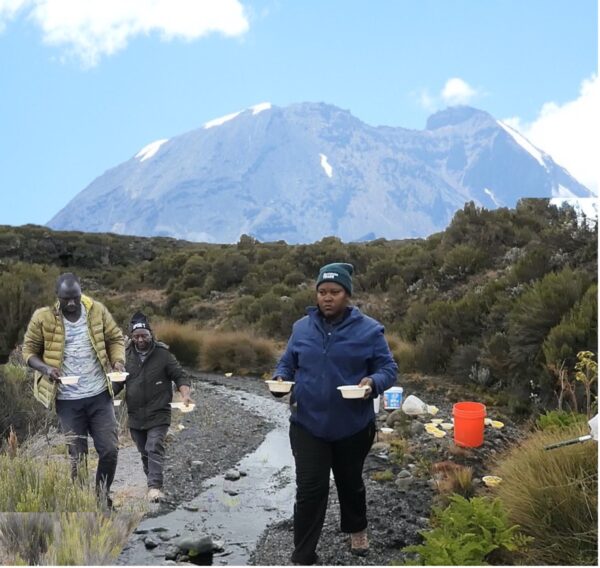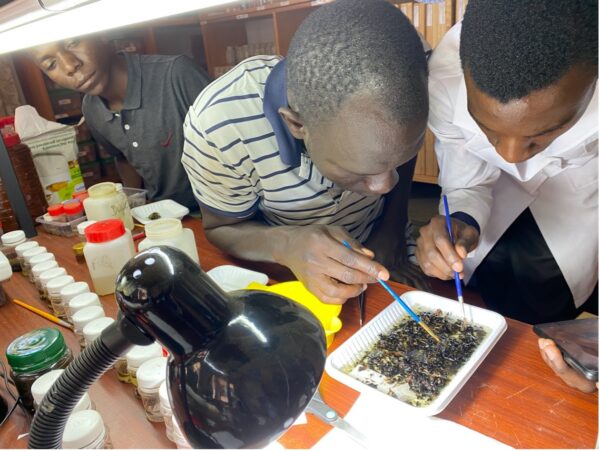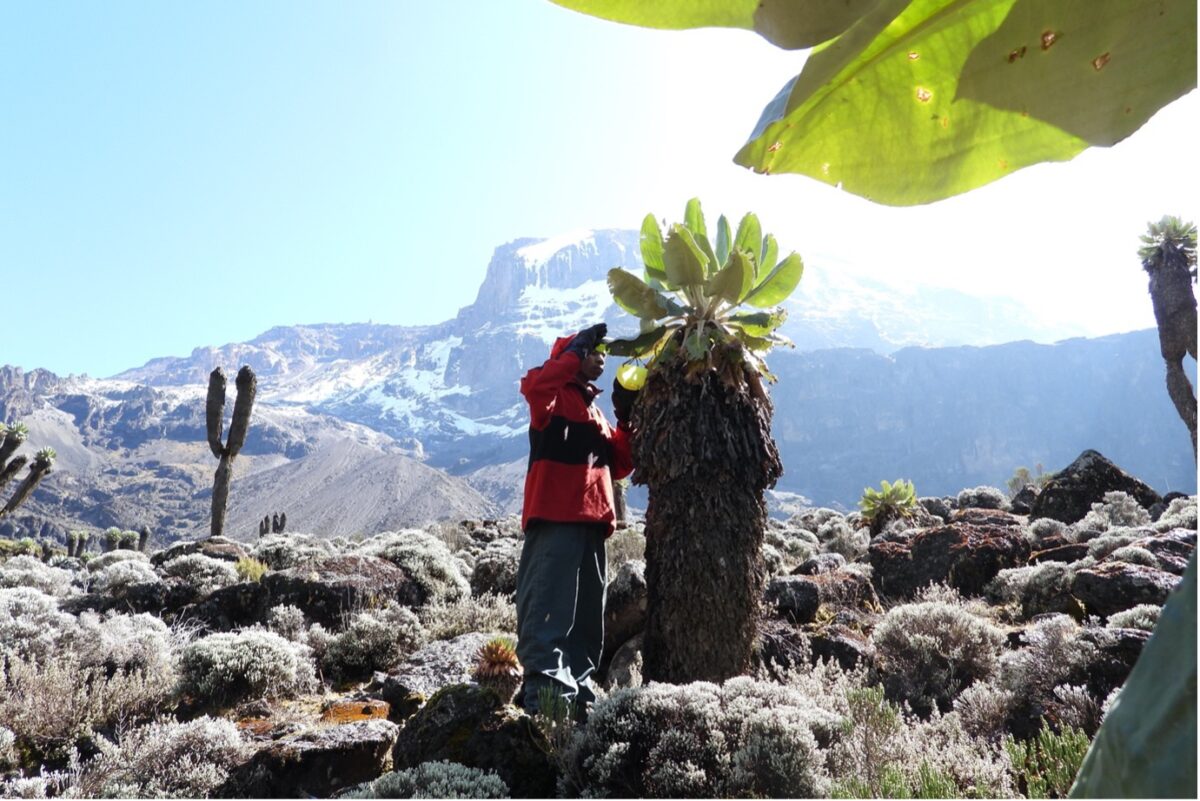JRS grantee Tanzania Wildlife Research Institute (TAWIRI) has led teams from Kenya’s Embu University and Uganda’s Makerere University to kick-off a transboundary project to collect invertebrate specimens from the highest montane ecosystems in Africa, including Mt Kilimanjaro, Mt Meru, Mt Kenya and Mt Stanley.
The goal of this exciting biodiversity project involving Tanzania, Kenya and Uganda is to train students in the collection and research of invertebrates native to the high montane forests and alpine zones of East Africa. The insect specimens are mounted on pins and species are identified to form a reference collection for the region. Collecting specimens in the highest mountains in Africa is valuable in order to assess and detect the future faunal impacts of climate change.


Among the thousands of insects collected by the team of collaborators, several interesting species were rediscovered on Mt Kilimanjaro, such as Oreonisius rugosus (Usinger, 1952) a small bug occurring only in close proximity to glaciers (4550 m), Nebrioporus kilimanjarensis (Régimbart, 1906) an aquatic beetle endemic to small streams of the forest belt (3100 m), and the male of Podalonia sheffieldi, a large wasp described by Turner 105 years ago from Mt Mulanje in Malawi.

Read more about the Invertebrate Surveys in Afromontane Ecosystems project here.

